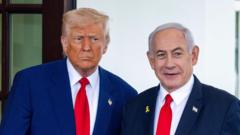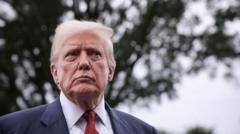The agreement marks a significant shift in the trade dynamics between the US and China, particularly in the semiconductor sector, as tensions appear to ease between the two economic giants.
Nvidia and AMD Strike Deal to Pay 15% of China Revenues to US Government

Nvidia and AMD Strike Deal to Pay 15% of China Revenues to US Government
Major chip manufacturers Nvidia and AMD have agreed to remit 15% of their semiconductor sales in China to the US as part of a deal for export licenses.
Chip manufacturing leaders, Nvidia and AMD, have come to an agreement to pay 15% of their revenues derived from semiconductor sales in China to the US government. This arrangement is reportedly designed to facilitate the procurement of export licenses, according to sources familiar with the negotiations.
A spokesperson for Nvidia stated, "We follow rules the US government sets for our participation in worldwide markets. While we haven't shipped H20 to China for months, we hope export control rules will let America compete in China and worldwide." In contrast, AMD has yet to comment on the development.
As part of the arrangement, Nvidia's payment will derive from its H20 chip sales, while AMD will contribute a similar percentage from its MI308 chip revenues, first highlighted by the Financial Times.
The US government had imposed restrictions on the export of Nvidia's H20 chips to China due to security concerns, although recent reports suggest that these restrictions might be lifted. Notably, the H20 chip was engineered specifically for the Chinese market after severe US export controls were introduced by the Biden administration in 2023, reaching a peak with a sales ban enacted in April by the Trump administration.
Nvidia's CEO, Jensen Huang, has actively sought to bridge gaps between US and Chinese relations concerning trade. Reports indicate he met with former President Donald Trump last week to advocate for the resumption of chip sales in China.
This development coincides with a gradual cooling of trade tensions between Washington and Beijing. For instance, China has begun relaxing controls over rare earth exports while the US has lifted restrictions affecting chip design software companies operating within the Chinese market.
Back in May, the leaders of the two leading economies agreed to a 90-day truce in their ongoing tariff conflicts, leading to several high-level meetings. However, an extension of this truce is not yet confirmed as the looming deadline of August 12 approaches.
















